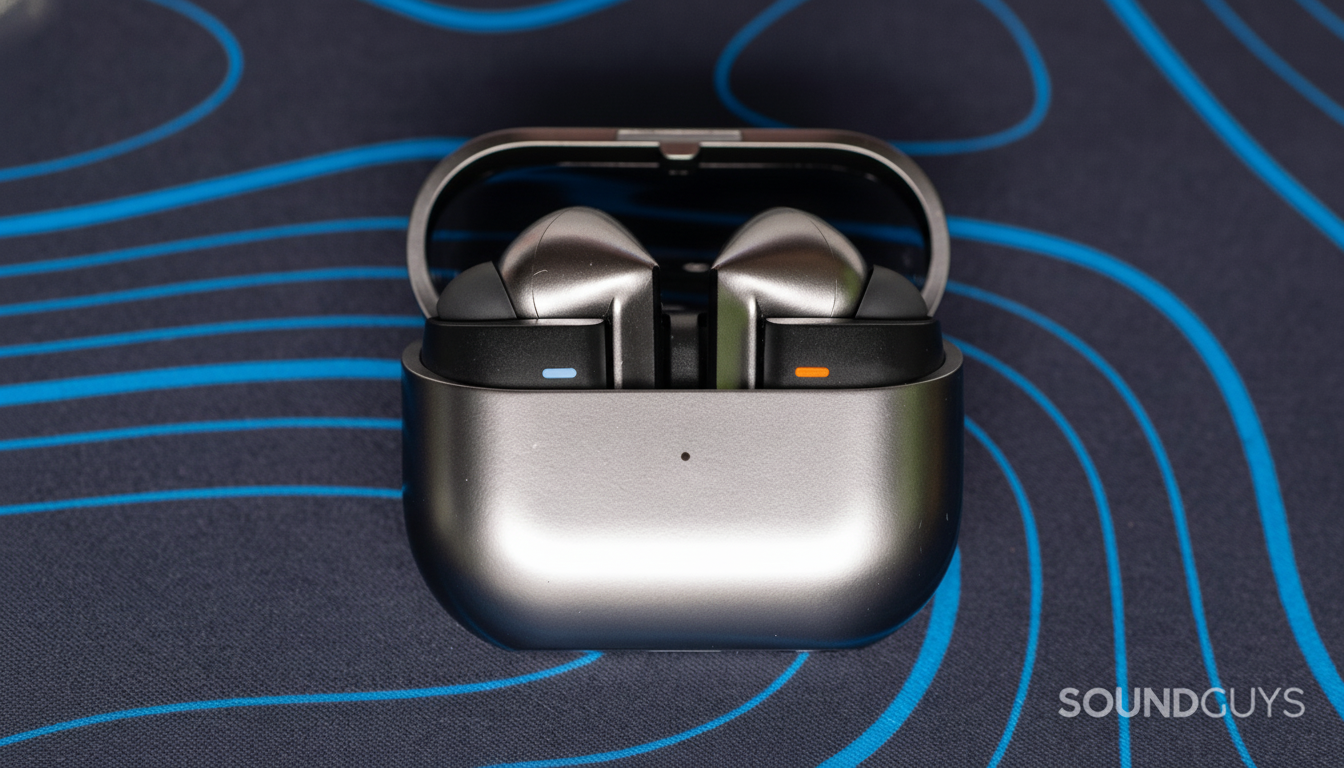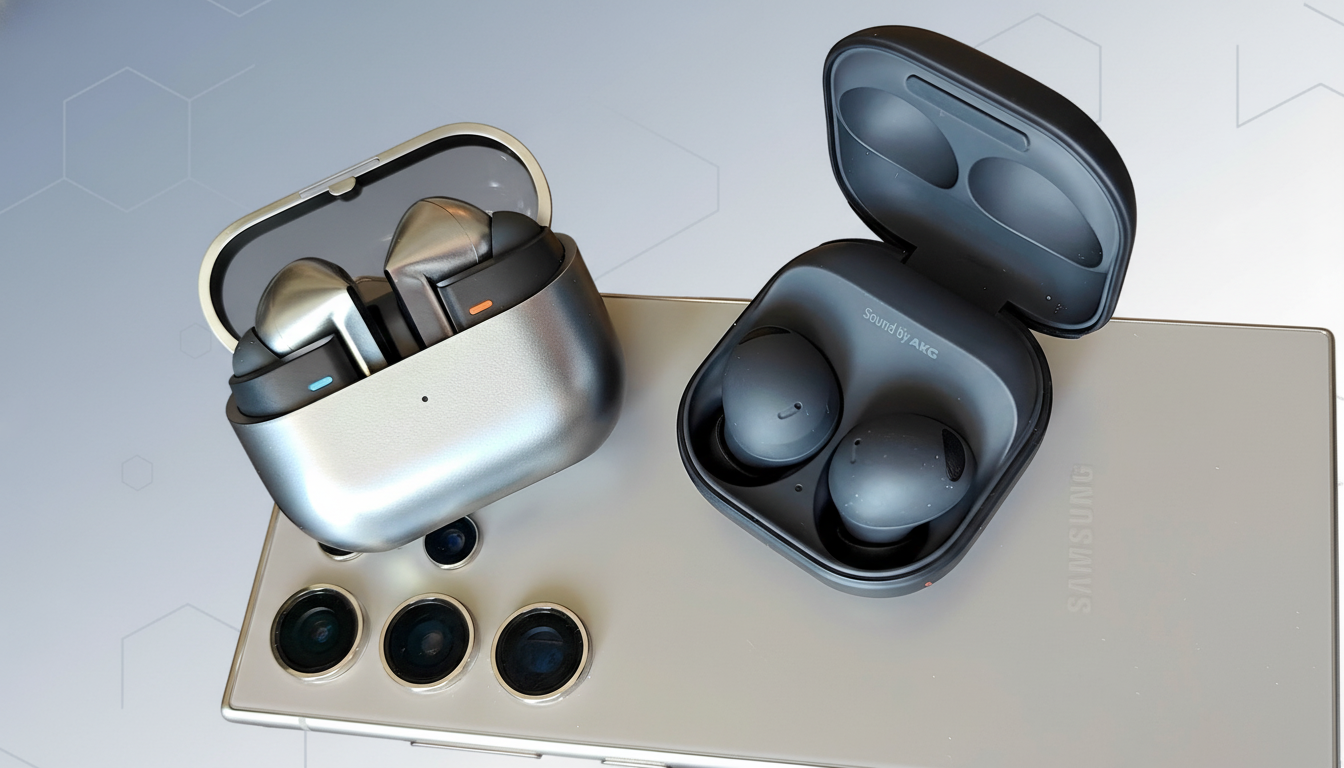Samsung’s next pair of earbuds has acquired names that sound at home in a music hall. Internal references within the early One UI 8.5 software builds suggest Galaxy Buds 4 will bear the codename “Handel” and a slightly higher-end companion product, the Galaxy Buds 4 Pro, is referred to as “Bach.” This classically themed naming convention is a bit of a departure for an audio gear company that in the past has stuck mostly with fruits, colors and gemstones.
The findings came inside Samsung’s Buds Manager app, part of the same One UI 8.5 codebase that previously revealed those model names. Although codenames don’t provide details about specs, they do confirm that both models are far enough along in development to be woven into the management software that deals with pairing, firmware and functionality.

What the new codenames indicate about Galaxy Buds 4
The jump from “Berry” (Buds 2), through “Jelly” (Buds 3), to “Paran” (Buds 3 Pro), then to “Gemstone” (for the Buds 3 FE) and now beyond, with the new Handel and Bach codenames, also implies purposeful adjustment on Samsung’s part. Performance and timbre are suggested by the composer codenames, so audio quality and tuning may have created a sound second to none with this generation of Samsung. It also dovetails with the company’s internal audio history through Harman and AKG, two brands steeped in studio-grade sound.
As a historical practice, Samsung uses different internal names to place its products into categories of devices and link up between the hardware, firmware and accessory roadmaps. Appearing in Buds Manager is not nothing: updates to that app typically debut with new features like LE Audio, Auracast broadcast support or new ANC modes. No, we don’t know if that’s how the cosmetics will shake out, but the visibility of the codenames means all of the firmware scaffolding is already there.
How this fits Samsung’s broader naming playbook strategy
It’s not often that Samsung’s internal designations are just mere numbers for the sake of it. Previous Galaxy phones have cycled through star systems and minerals; wearables have leaned on flora and gems. Audio products have been more playful — until the present. Composer names lend a legitimacy and reveal a narrative hook for the purposes of marketing, without permanently setting a public brand. It’s the same sort of trick played by camera makers, and certain hi-fi manufacturers who like to steal from classical music to present precision and purity.
There’s also tactical value. Splitting a standard model and a Pro model across different composers makes it easier for engineering and supply teams to spread out features — drivers, microphones and case electronics — throughout development while ensuring the family identity aligns.

What it might indicate about features and audio tuning
And while names don’t always correspond to specs, the Pro version has traditionally had more potent ANC, a greater number of microphones and higher-quality materials. As for what the latter is underpinned by, it’s unclear, but expect further focus on Bluetooth LE Audio capabilities and LC3 codecs where they can be utilized alongside fast device swapping and spatial audio enhancements. If Samsung goes heavy into the classical theme, we might see more EQ profiles designed in partnership with AKG and improved stage imaging to accompany orchestral recordings.
Design remains the big unknown. The Buds 3 line brought a new stemmed design and blade-style controls. Whether Buds 4 sticks with that design or goes back to a rounded shell probably depends on the microphone positions for ANC and wind reduction, which are typically improved in Pro models.
Why the name matters in an increasingly noisy market
Massive: The true wireless market is both huge and maturing. Counterpoint Research has seen consistent mid-single-digit growth rates for TWS shipments, with Apple as the top brand and Samsung swapping No. 2 and No. 3 positions in this ranking list with its challengers according to the quarter. The category is thought to have shipped on the order of 300–350 million units globally last year, highlighting how small differentiators — tuning, latency and switching behavior are three such areas that don’t mean much by themselves but can persuade buyers — can work wonders.
Storytelling plays a role, too. Codenames based on composers hint at fidelity and could become part of a broader thread in marketing, packaging and software UI when the products finally arrive. For users, the takeaway is slightly easier: there are sightings that affirm both Buds 4 and Buds 4 Pro seem on course to release; the hooks for software development are already being sunk in; and Samsung looks set to make a sound quality push with its next buds.
So until hardware images or certification filings pop up — typically in the form of Bluetooth SIG info, or filing information with regulatory databases — the best clue we have is in code. And right now, the code says: Handel and Bach are standing in the wings.

